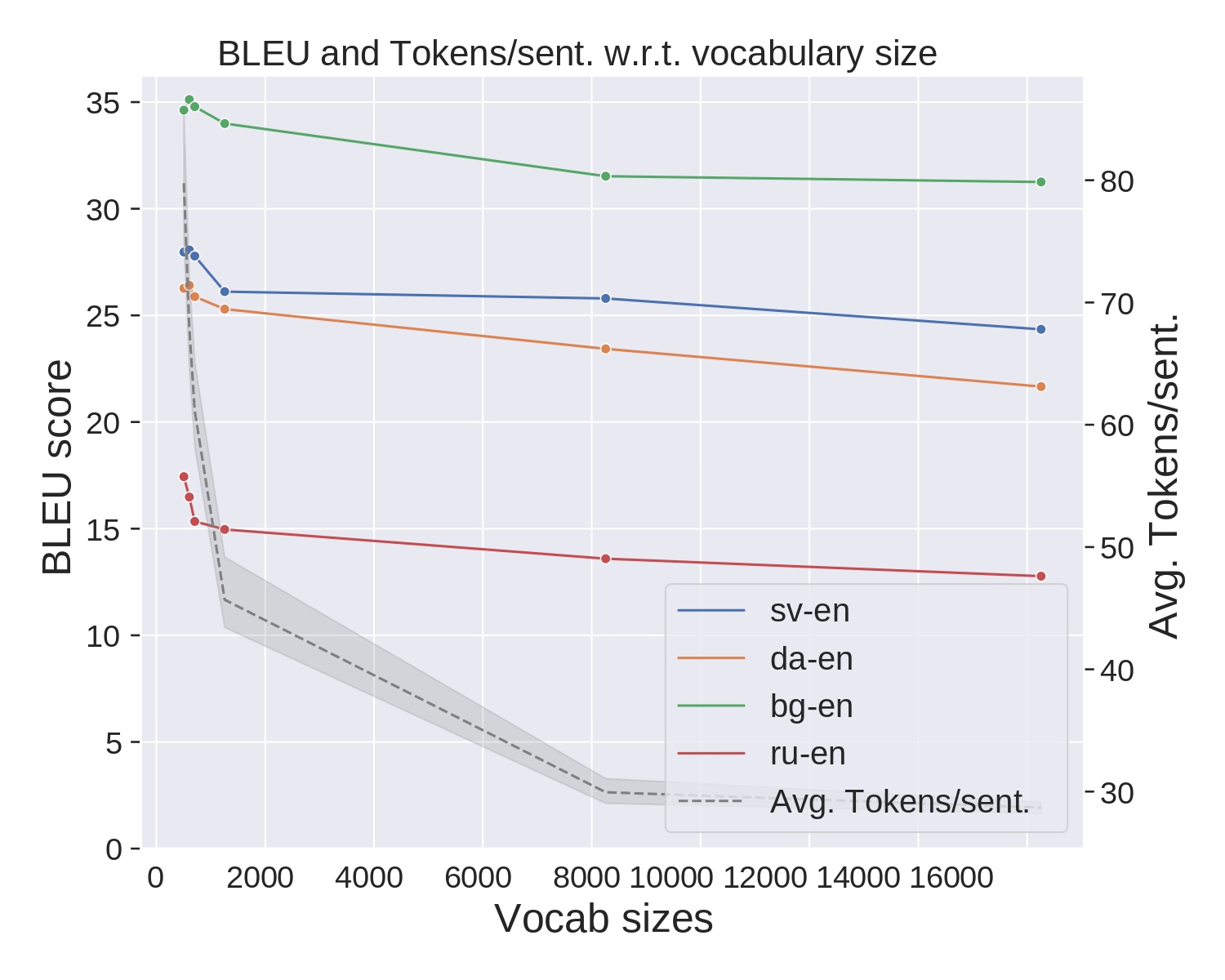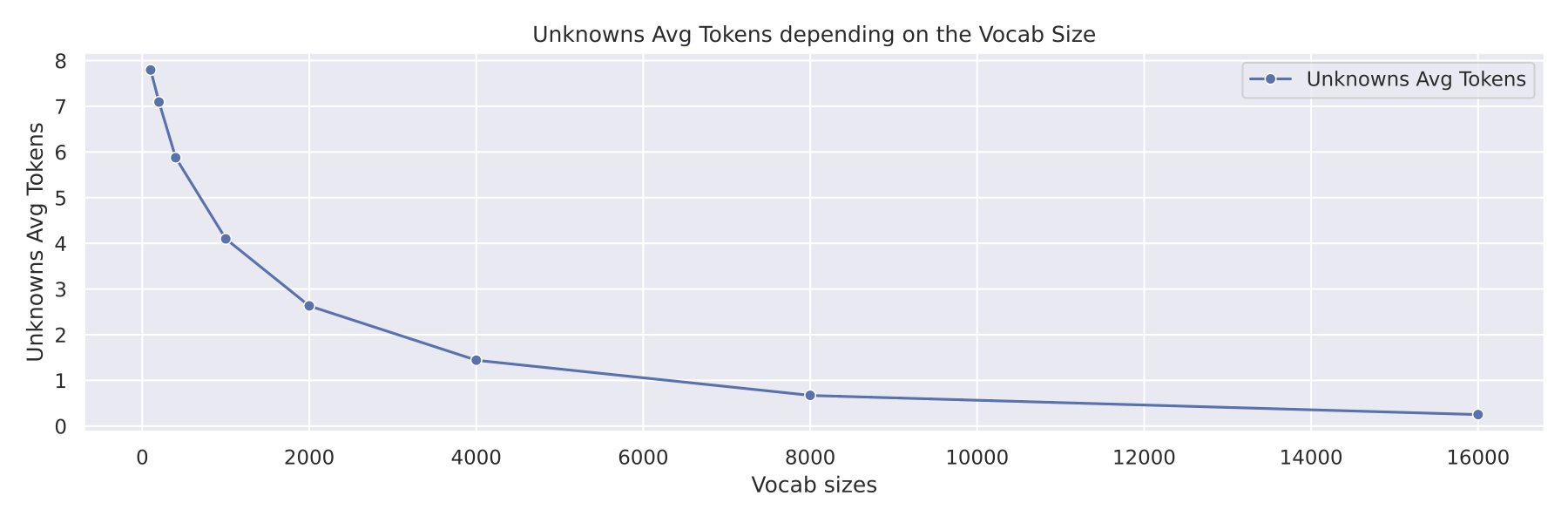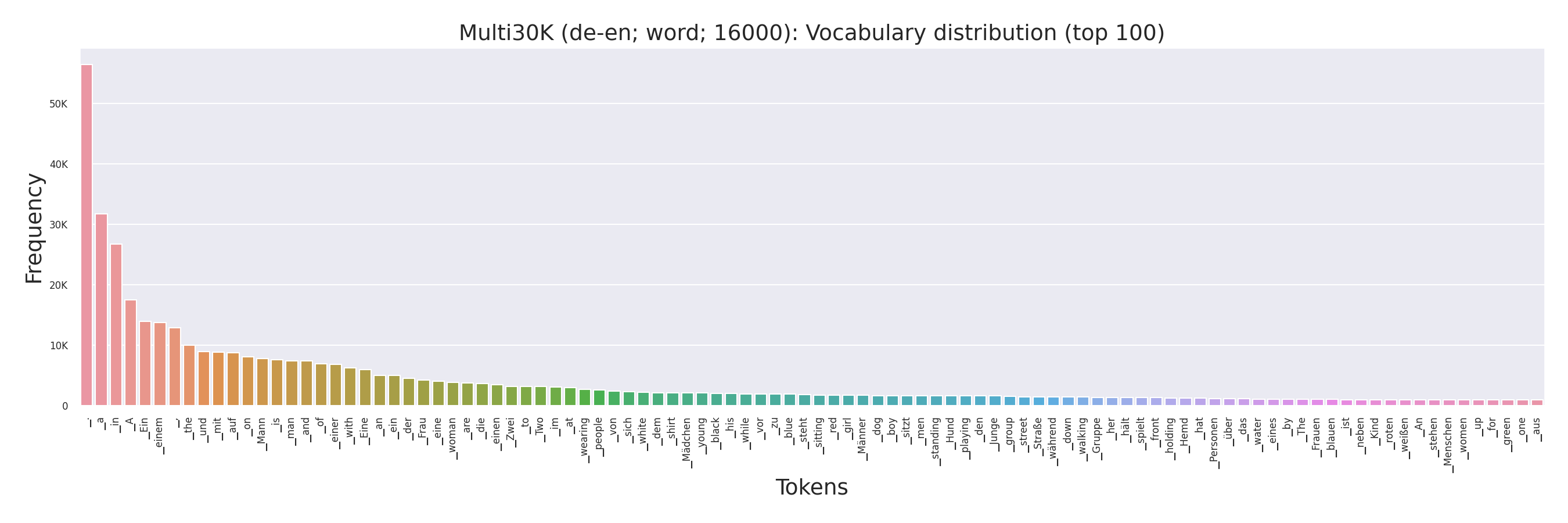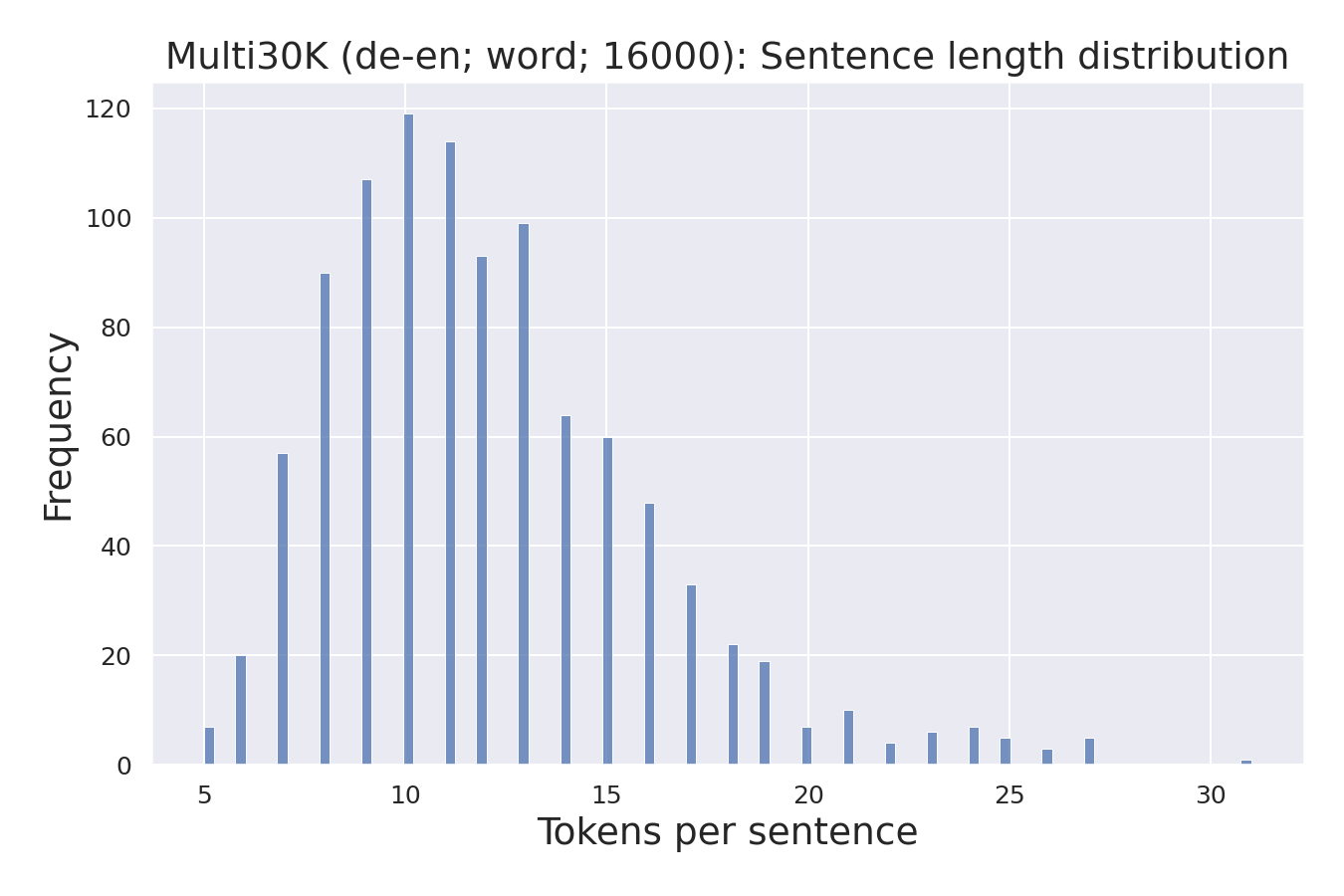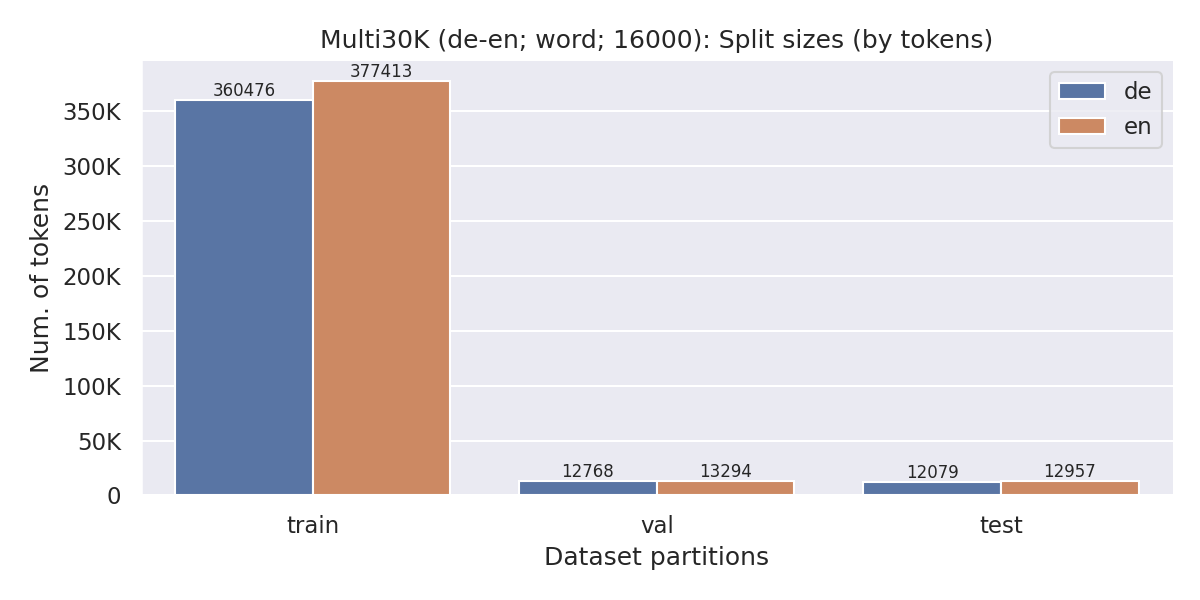Scikit-learn but for Seq2Seq tasks
AutoNMT is a Python library that allows you to research seq2seq models by providing two high-level features:
- Automates the grid experimentation: Tokenization, training, scoring, logging, plotting, stats, file management, etc.
- Toolkit abstraction: Use your models, our models, or different libraries such as Fairseq or OpenNMT, changing a single of code.
Why us?
We follow an almost-no code approach so that you can remain focused on your research without wasting time learning the inner workings of another toolkit.
Reproducibility
Reproducibility is a must in research. Because of that, we only use reference libraries that produce shareable, comparable, and reproducible results such as Sacrebleu, Moses or SentencePiece.
Furthermore, we provide two features for reproducibility:
- All the intermediate steps (raw files, tokenized, binaries, scores,...) are saved in separated folders so that a user can inspect any part of the process (and reuse it in other projects) and, we also output all the commands use to compute
- We also output the exact commands used for the reference libraries, so you can replicate any part of the process for yourself
Tested on Python 3.8-3.11
Option #1: Pip
git clone git@github.com:salvacarrion/autonmt.git
cd autonmt/
pip install -e .
Option #2: Docker
git clone git@github.com:salvacarrion/autonmt.git
cd autonmt/
docker build -t autonmt:latest .
docker run --gpus all -d -v .:/autonmt --name autonmt_container autonmt:latest
docker exec -it autonmt_container bash
You check full examples here.
The DatasetBuilder is the object in charge of generating variants of your datasets ("original"). In other words, it
creates versions of your original dataset, with different training sizes to test ideas faster, multiple vocabularies
lengths and variations (bytes, char+bytes, unigram, bpe, word), etc.
If you don't know how to use it, don't worry. Run the following code with the interactive=True argument enabled,
and it will guide you step-by-step so that you can create a new dataset.
from autonmt.preprocessing import DatasetBuilder
# Create preprocessing for training
builder = DatasetBuilder(
# Root folder for datasets
base_path="datasets/translate",
# Set of datasets, languages, training sizes to try
datasets=[
{"name": "europarl", "languages": ["es-en", "fr-en", "de-en"], "sizes": [("original", None), ("100k", 100000)]},
{"name": "scielo/health", "languages": ["es-en"], "sizes": [("100k", 100000)], "split_sizes": (None, 1000, 1000)},
],
# Set of subword models and vocab sizes to try
encoding=[
{"subword_models": ["bpe", "unigram+bytes"], "vocab_sizes": [8000, 16000, 32000]},
{"subword_models": ["bytes", "char", "char+bytes"], "vocab_sizes": [1000]},
],
# Preprocessing functions
preprocess_raw_fn=lambda x, y: preprocess_pairs(x, y,...),
preprocess_splits_fn=lambda x, y: preprocess_pairs(x, y,...),
# Additional args
merge_vocabs=False,
).build(make_plots=False, force_overwrite=False)
# Create preprocessing for training and testing
tr_datasets = builder.get_train_ds()
ts_datasets = builder.get_test_ds()Once you've run the above code, the program will tell you where to put your files. Nevertheless, it expects that all files contain one sample per line and their language code as their extension.
For instance, there are two ways to create a dataset:
- From raw files:
data.esanddata.en=>train.es,train.en,val.es,val.en,test.esandtest.en. - From split files:
train.es,train.en,val.es,val.en,test.esandtest.en.
The Translator object abstracts the seq2seq pipeline so that you can train and score your custom models effortless. Similarly,
you can use other engines such as fairseq or opennmt.
from autonmt.toolkits import AutonmtTranslator
from autonmt.modules.models import Transformer
from autonmt.vocabularies import Vocabulary
# Build datasets
# tr_datasets, ts_datasets = ...
# Train & Score a model for each dataset
scores = []
for train_ds in tr_datasets:
# Instantiate vocabs and model
src_vocab = Vocabulary(max_tokens=150).build_from_ds(ds=train_ds, lang=train_ds.src_lang)
trg_vocab = Vocabulary(max_tokens=150).build_from_ds(ds=train_ds, lang=train_ds.trg_lang)
model = Transformer(src_vocab_size=len(src_vocab), trg_vocab_size=len(trg_vocab), padding_idx=src_vocab.pad_id)
# Define trainer
runs_dir = train_ds.get_runs_path(toolkit="autonmt")
run_name = train_ds.get_run_name(run_prefix="mymodel")
trainer = AutonmtTranslator(model=model, src_vocab=src_vocab, trg_vocab=trg_vocab,
runs_dir=runs_dir, run_name=run_name)
# Train model
wandb_params = None #dict(project="autonmt", entity="salvacarrion")
trainer.fit(train_ds, max_epochs=5, learning_rate=0.001, optimizer="adam", batch_size=128, seed=1234,
patience=10, num_workers=10, strategy="ddp", save_best=True, save_last=True, wandb_params=wandb_params)
# Test model
m_scores = trainer.predict(ts_datasets, metrics={"bleu", "chrf", "bertscore"}, beams=[1, 5], load_checkpoint="best",
preprocess_fn=preprocess_predict_fn, eval_mode="compatible", force_overwrite=False)
scores.append(m_scores)The evaluation will be performed only the compatible datasets (same source and target language).
It is worth to point out that the DatasetBuilder will create n variations for each unique dataset, therefore, n models per unique dataset will be trained. Nevertheless, AutoNMT is smart enough to evaluate each model once per unique dataset as the raw test files of each variation are the same (each model will encode its data).
Our models are wrapped using Pytorch Lightning. Therefore, you can pass to the fit function all the parameters that training of pytorch lightning accepts (and more!).
Check the available parameters here
This code will save the score of the multiple training (as json and csv), will create a summary of the results and will make a few plots to visualize the performance of the models.
import datetime
from autonmt.bundle.report import generate_report
# Train models
# scores = ...
# Make report and print it
output_path = f".outputs/autonmt/run1"
df_report, df_summary = generate_report(scores=scores, output_path=output_path, plot_metric="translations.beam1.sacrebleu_bleu_score")
print("Summary:")
print(df_summary.to_string(index=False))Single toolkit output:
train_dataset eval_dataset subword_model vocab_size fairseq_bleu
multi30k_test multi30k_test unigram 4000 35.123375
multi30k_test multi30k_test word 4000 34.706139
Multi-toolkit output:
train_dataset eval_dataset subword_model vocab_size fairseq_bleu autonmt_bleu
multi30k_test multi30k_test unigram 4000 35.123375 32.816378
multi30k_test multi30k_test word 4000 34.706139 34.682657
Note: AutoNMT didn't have some of the training parameters that Fairseq had.
To create your custom pytorch model, you only need inherit from Seq2Seq and then pass it as parameter to the Translator class.
The only requirement is that the forward must return a tensor with shape (batch, length, probabilities).
from autonmt.toolkits import AutonmtTranslator
from autonmt.modules.seq2seq import LitSeq2Seq
class CustomModel(LitSeq2Seq):
def __init__(self, src_vocab_size, trg_vocab_size, padding_idx, **kwargs):
super().__init__(src_vocab_size, trg_vocab_size, padding_idx, **kwargs)
def forward_encoder(self, x):
pass
def forward_decoder(self, y, memory):
pass # output = (Batch, Length, probabilities)Custom trainer/evaluator
Our Seq2Seq base model is simply a wrapper that uses PyTorchLightning. If you need to write your custom Seq2Seq trainer, you can do it like this:
import pytorch_lightning as pl
class LitCustomSeq2Seq(pl.LightningModule):
# Stuff for Pytorch Lightning modules
class CustomModel(LitCustomSeq2Seq):
def __init__(self, *args, **kwargs):
super().__init__(*args, **kwargs)
# Custom model
model = AutonmtTranslator(model=CustomModel(...), ...)When using a Fairseq model, you can use it through the fairseq command-line tools:
from autonmt.toolkits.fairseq import FairseqTranslator
# These args are pass to fairseq using our pipeline
# Fairseq Command-line tools: https://fairseq.readthedocs.io/en/latest/command_line_tools.html
fairseq_args = [
"--arch transformer",
"--encoder-embed-dim 256",
"--decoder-embed-dim 256",
"--encoder-layers 3",
"--decoder-layers 3",
"--encoder-attention-heads 8",
"--decoder-attention-heads 8",
"--encoder-ffn-embed-dim 512",
"--decoder-ffn-embed-dim 512",
"--dropout 0.1",
]
# Build datasets
# tr_datasets, ts_datasets = ...
# Train & Score a model for each dataset
scores = []
for train_ds in tr_datasets:
# Define trainer
runs_dir = train_ds.get_runs_path(toolkit="autonmt")
run_name = train_ds.get_run_name(run_prefix="mymodel")
trainer = FairseqTranslator(runs_dir=runs_dir, run_name=run_name)
# Train model
trainer.fit(train_ds, max_epochs=5, learning_rate=0.001, optimizer="adam", batch_size=128, seed=1234,
patience=10, num_workers=10, strategy="ddp", fairseq_args=fairseq_args)
# Test model
m_scores = trainer.predict(ts_datasets, metrics={"bleu", "chrf", "bertscore"}, beams=[1, 5], load_checkpoint="best",
preprocess_fn=preprocess_predict_fn, eval_mode="compatible", force_overwrite=False)
scores.append(m_scores)Note: 'fairseq_args' always has preference over the 'autonmt' parameters in case of a collision. This is because in order to provide framework compatibility using the same set parameters, we had to define a translation table of parameters between tookits (i.e. "max_epochs" (autonmt) => "--max-epoch" (fairseq). So if a user sets "max_epochs=10" (autonmt) in the fit, and "--max-epoch 15" (fairseq) in the 'fairseq_args', we will consider the later.
AutoNMT will automatically generate plots for the split sizes, the sentence length distributions, token frequencies, the evaluated models, etc. All these plots can be found along with either a .json or a .csv containing its data, summary and statistics
Avg. tokens vs BLEU:
Avg. number of unknowns per sentence:
Vocabulary distributions:
Sentence length distributions:
Split sizes:
This is an example of the typical layout that the DatasetBuilder generates: (complete tree here)
multi30k/
.
└── de-en
└── original
├── data
│ ├── 1_splits
│ ├── 2_preprocessed
│ ├── 3_pretokenized
│ └── 4_encoded
│ ├── char+bytes
│ │ └── 8000
│ │ ├── test.de
│ │ ├── test.en
│ │ ├── train.de
│ │ ├── train.en
│ │ ├── val.de
│ │ └── val.en
│ ├── unigram
│ │ └── 8000
│ └── word
│ └── 8000
├── models
│ ├── autonmt
│ │ └── runs
│ │ └── model_word_8000
│ │ ├── checkpoints
│ │ │ └── checkpoint_best__epoch=4-val_loss=1.42.pt
│ │ ├── eval
│ │ │ └── multi30k_de-en_original
│ │ │ ├── beam
│ │ │ │ └── beam1
│ │ │ └── data
│ │ │ ├── 0_raw
│ │ │ ├── 1_raw_preprocessed
│ │ │ └── 4_encoded
│ │ └── logs
│ │ ├── config_predict.json
│ │ ├── config_train.json
│ │ └── model_word_8000
│ │ ├── version_0
│ │ ├── version_1
│ │ └── version_2
│ └── fairseq
│ ├── data-bin
│ └── runs
├── stats
└── vocabs
...
# Build docker image
docker build -t autonmt:latest .
# Run docker in detatch mode: Use GPUs, Detach, Interactive, Mount local directory,...
docker run --gpus all -d -v .:/app/autonmt -v /home/scarrion/datasets/translate:/app/data --name autonmt_container autonmt:latest
# Run script inside the container
## Interactive ("ctrl+b d" to detach; "ctrl+c" to kill)
docker exec -it autonmt_container tmux new-session "python /app/autonmt/examples/dev/0_test_custom_model.py > output.log"
# Reattach to the script
docker exec -it autonmt_container tmux attach
# To access the container (...and kill something)
docker exec -it autonmt_container tmux
docker exec -it autonmt_container bash




